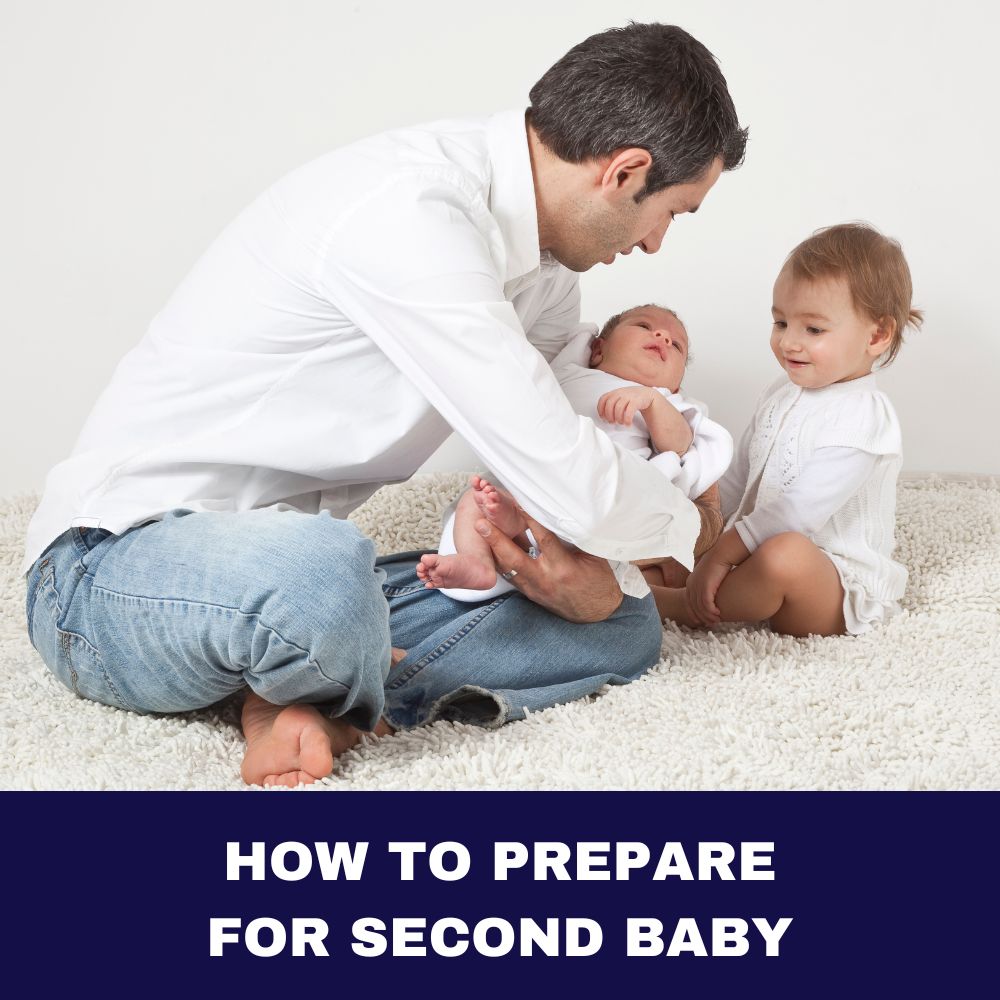Ah, the newborn witching hour – that bewitching time of day (or night) when your precious bundle transforms into a fussy, inconsolable little creature. If you’re a new parent navigating this often-dreaded phase, you’re not alone. Many moms and dads find themselves at their wits’ end during those evening hours, desperately trying every trick in the book to soothe their wailing newborn.
But fear not, fellow parents! We’ve got your back with this comprehensive guide to surviving – and even thriving – during the newborn witching hour upheaval. Buckle up and get ready to skyrocket your sanity with these nine proven tricks.
What is the Newborn Witching Hour?
The newborn witching hour, also known as the evening fussy period, is a time when babies seem to become inexplicably fussy, cranky, and difficult to console. This unsettled phase typically occurs in the late afternoon or evening hours, often between 6 pm and midnight, but can vary from baby to baby.
During this time, your little one may exhibit behaviors like inconsolable crying, body tensing, fist clenching, and an overall unsettled demeanor. It’s as if they’ve been possessed by a little witchy spirit, determined to test the limits of your patience and sleep deprivation.
While the witching hour can be utterly exhausting and frustrating, it’s important to remember that this phase is temporary and completely normal for newborns. In fact, it’s estimated that up to 25-30% of babies experience this fussy period, typically peaking around 6-8 weeks of age and gradually diminishing by 3-4 months.

The Science Behind the Witching Hour
So, what’s behind this bewitching behavior? There are several biological and developmental factors that may contribute to the newborn witching hour:
Overstimulation: After a long day filled with new sights, sounds, and experiences, your baby’s little brain can become overstimulated, leading to fussiness and difficulty settling down.
Overtiredness: Conversely, if your baby has missed a nap or has been awake for too long, they may become overtired and struggle to wind down for the night.
Discomfort: Things like gas, reflux, or a growth spurt can cause physical discomfort, leading to increased fussiness during the witching hour.
Hunger: Newborns have tiny tummies and need to eat frequently. The witching hour may coincide with hunger cues, even if your little one has been feeding regularly throughout the day.
Understanding these potential triggers can help you better anticipate and address your baby’s needs during this challenging phase.
| Trigger | Description |
|---|---|
| Overstimulation | After a long day of new sights, sounds, and experiences, a baby’s brain can become overstimulated, leading to fussiness and difficulty settling down. |
| Overtiredness | If a baby misses a nap or has been awake for too long, they may become overtired and struggle to wind down for the night. |
| Discomfort | Physical discomforts like gas, reflux, or a growth spurt can contribute to increased fussiness during the witching hour. |
| Hunger | Newborns have tiny tummies and need to eat frequently. The witching hour may coincide with hunger cues, even if the baby has been feeding regularly. |
When is the Witching Hour and When Does it End?
The newborn witching hour typically strikes in the late afternoon or evening hours, often between 6 pm and midnight. However, every baby is unique, and the timing may vary slightly for your little one.
As for when this phase ends, it’s important to remember that the witching hour is a temporary (albeit exhausting) stage. For most babies, the peak fussiness usually occurs around 6-8 weeks of age and gradually subsides by 3-4 months.
However, some babies may experience a longer or shorter witching hour phase, depending on various factors like temperament, developmental milestones, and individual differences. If your baby’s fussiness persists beyond 4 months or seems excessive, it’s always a good idea to consult with your pediatrician to rule out any underlying issues.
While the witching hour can feel never-ending in the moment, try to take comfort in the fact that this too shall pass. In the meantime, let’s dive into some tried-and-true strategies to help you and your little one navigate this bewitching phase with a bit more ease.
9 Proven Tricks to Survive the Newborn Witching Hour
- Embrace the Soothing Power of Motion
One of the most effective ways to calm a fussy newborn is to mimic the familiar motions they experienced in the womb. Techniques like baby wearing, rocking, swinging, or even going for a drive can work wonders during the witching hour.
The gentle, rhythmic movements can help soothe your baby’s senses and replicate the cozy, comforting environment they experienced before birth. It’s like a mini-vacation back to the womb – a place where all was peaceful and calm (and mom did all the heavy lifting!).
Baby wearing, in particular, can be a game-changer during the witching hour. With your little one snuggled close to your chest, the warmth, and the rhythm of your heartbeat can work like magic to calm their fussiness. Plus, it frees up your hands for those all-important snack breaks or much-needed multi-tasking.
Next-step advice: Experiment with different baby carriers or wraps to find the perfect fit for you and your little one. And don’t be afraid to bust out those dance moves – a little gentle swaying or bouncing can go a long way in soothing your fussy babe.
- Master the Art of White Noise
Remember that cozy, muffled sound your baby heard in the womb? White noise can replicate that familiar, calming ambiance and help drown out any external noises that might be overstimulating your little one during the witching hour.
From hair dryers to vacuum cleaners, or even dedicated white noise apps and machines, there are plenty of options to create a soothing soundscape for your baby. The constant, steady hum can work wonders in masking disruptive sounds and promoting a sense of calm and relaxation.
But be mindful of the volume – you don’t want to overdo it and risk damaging your baby’s delicate ears. A gentle, steady stream of white noise at a moderate volume level is the sweet spot you’re aiming for.
Next-step advice: Experiment with different white noise sources to find the one that works best for your baby. And consider keeping a portable white noise machine or app handy for on-the-go soothing during the witching hour upheaval.
- Enlist Help from a Pacifier
The power of non-nutritive sucking should not be underestimated when it comes to calming a fussy baby. Sucking is a deeply ingrained, comforting reflex for newborns, and a pacifier can be a lifesaver during the witching hour.
Not only does the sucking motion help soothe and self-regulate your baby, but the act of searching for and finding the pacifier can also provide a much-needed distraction from the fussiness.
However, it’s essential to introduce the pacifier correctly and follow best practices to avoid potential issues like nipple confusion or dental problems down the line. Consult with your pediatrician or lactation consultant for guidance on the appropriate timing and techniques for pacifier use.
Next-step advice: Keep a stash of pacifiers within easy reach during the witching hour, and consider trying different shapes, sizes, or materials to find the one your baby prefers. And don’t worry if your little one spits it out at first – persistence and consistency are key when establishing pacifier use.

- Try a Warm Bath or Massage
There’s something inherently soothing about the warm embrace of water or gentle touch. A calming bath or infant massage can work wonders in relaxing your baby’s senses and easing the witching hour upheaval.
The warmth of the bath water can have a comforting, womb-like effect, while the gentle strokes of a massage can help release tension and promote relaxation. Just be sure to follow proper safety guidelines, such as using a non-slip bath mat and keeping the water temperature lukewarm (not too hot or too cold).
For infant massage, focus on gentle, rhythmic strokes using a high-quality, fragrance-free oil or lotion. Pay extra attention to areas like the back, legs, and tummy, as these can be particularly soothing for babies.
Next-step advice: Incorporate a warm bath or massage into your baby’s bedtime routine to help signal that it’s time to wind down and prepare for sleep. And don’t forget to take some deep breaths yourself – these calming activities can be just as therapeutic for frazzled parents as they are for fussy babies.
- Recreate the Womb with Swaddling
When done correctly, swaddling can provide a sense of containment and help prevent the startle reflex that often contributes to fussiness. It’s like a little cocoon of calm amidst the storm of witching hour upheaval.
However, proper swaddling technique is crucial for safety and effectiveness. Be sure to leave room for hip and leg movement, and never cover your baby’s face or overheat them. It’s also important to stop swaddling once your little one starts attempting to roll over.
Next-step advice: Practice your swaddling skills before the witching hour strikes. Invest in a quality swaddle blanket or sleep sack designed for safe swaddling, and don’t be afraid to ask your pediatrician or a lactation consultant for a demonstration.
| Technique | Description |
|---|---|
| Leave Room for Hips/Legs | Ensure that the swaddle allows for hip and leg movement to prevent hip dysplasia. |
| Avoid Overheating | Never cover the baby’s face or overheat them while swaddled, as this can increase the risk of SIDS. |
| Stop When Rolling | Discontinue swaddling once the baby starts attempting to roll over, typically around 2-3 months old. |
| Use Appropriate Blankets | Invest in swaddle blankets or sleep sacks designed specifically for safe swaddling. |
- Adjust the Environment: Lighting and Temperature
Creating the right atmosphere can go a long way in promoting calm and sleepiness during the newborn witching hour. Dim the lights and keep the room slightly cooler than normal to mimic the ideal sleep environment.
Bright lights and warm temperatures can overstimulate your baby and make it harder for them to settle down. By adjusting these environmental factors, you’re essentially setting the stage for relaxation and restful slumber.
Next-step advice: Invest in blackout curtains or a dim nightlight to control the lighting levels. And consider using a fan or adjusting the thermostat to achieve a comfortable, slightly cooler temperature conducive to sleep.
- Offer a Pacifier or Skin-to-Skin Contact
In addition to the pacifier trick mentioned earlier, skin-to-skin contact can be another powerful tool for soothing your baby during the witching hour.
The warmth and familiar scent of your bare skin, coupled with the sound of your heartbeat, can provide a deeply comforting and grounding experience for your little one. It’s like a mini-reset button, transporting them back to the safety and security of the womb.
Next-step advice: Try incorporating skin-to-skin time into your witching hour routine. Strip down to your comfortable level, and simply hold your baby close, allowing them to bask in your warmth and familiar presence.
- Stay Calm and Patient
As challenging as it can be, maintaining a calm and patient demeanor during the witching hour is crucial for both you and your baby.
Newborns are incredibly perceptive and can pick up on your stress and anxiety, which can further exacerbate their fussiness. By taking deep breaths and staying composed, you’re not only modeling calmness for your little one but also setting the tone for a more peaceful environment.
Remember, this phase is temporary, and your baby’s fussiness is not a reflection of your parenting abilities. Cut yourself some slack, and don’t be afraid to step away for a few minutes if you need to regroup.
Next-step advice: Implement calming techniques for yourself, such as deep breathing exercises, meditation, or even a quick dance party to release tension. And don’t hesitate to ask for help from your partner, family, or friends – a little extra support can go a long way during the witching hour upheaval.

- Establish a Bedtime Routine and Prepare
Consistency and preparation can be game-changers when it comes to navigating the newborn witching hour. Establishing a calming bedtime routine can help signal to your baby that it’s time to wind down and prepare for sleep.
This routine can include activities like a warm bath, gentle massage, lullabies, or a bedtime story – whatever works best for your family. The key is to create a predictable pattern that your baby can come to recognize and associate with sleepytime.
In addition to the routine, it’s also helpful to have all the necessary supplies and strategies at the ready before the witching hour strikes. Stock up on pacifiers, swaddles, white noise machines, and any other soothing tools you might need.
Next-step advice: Start implementing a consistent bedtime routine as early as possible, and be patient – it may take some time for your baby to adapt. And don’t forget to prepare yourself mentally and emotionally for the witching hour upheaval. A few deep breaths and a positive mindset can go a long way.
| Routine Step | Description |
|---|---|
| Warm Bath | A relaxing bath can help signal to the baby that it’s time to wind down for sleep. |
| Gentle Massage | Infant massage with a fragrance-free oil or lotion can promote relaxation and bonding. |
| Lullabies or Story | Singing lullabies or reading a bedtime story can create a soothing, familiar routine. |
| Swaddling | Swaddling the baby can provide a sense of security and help prevent the startle reflex. |
| White Noise | Playing calming white noise can mimic the familiar sounds of the womb and promote sleepiness. |
When to Ask for Help
Even with all these tricks up your sleeve, there may be times when the newborn witching hour feels utterly overwhelming. And that’s okay – parenting is a team effort, and there’s no shame in enlisting support when you need it.
Reach out to your partner, family members, or trusted friends to lend a hand during those challenging evening hours. Even a brief break to recharge can make a world of difference in your ability to cope with the fussiness.
And remember, self-care is not a luxury but a necessity. Make sure to prioritize your own well-being by getting adequate rest (whenever possible), staying hydrated, and taking breaks as needed. A happy, healthy parent is better equipped to handle the witching hour upheaval.
When to Seek Professional Help
While excessive crying and fussiness are common during the newborn witching hour, there may be instances when it’s necessary to seek professional guidance.
If your baby’s crying seems excessive or inconsolable, even after trying various soothing techniques, it’s a good idea to consult with your pediatrician. Persistent fussiness could be a sign of an underlying issue, such as reflux, colic, or other medical concerns.
Your pediatrician can help rule out any potential problems and provide additional support and guidance specific to your baby’s needs.
In Conclusion
The newborn witching hour may be a brief but intense phase, but with the right strategies and a little bit of patience, you can emerge victorious. Remember, this too shall pass, and before you know it, those fussy evenings will be a distant memory.
Embrace the chaos, lean on your support system, and don’t be afraid to get creative with your soothing techniques. Every baby is unique, and it may take some trial and error to find the perfect combination of tricks that work for your little one.
But fear not, fellow parents – with this comprehensive guide in your arsenal, you’re well on your way to skyrocketing your sanity and emerging from the witching hour upheaval as a battle-tested, baby-soothing warrior.
So, take a deep breath, grab a pacifier (or two), and know that you’ve got this. The witching hour may be upon you, but with a little magic (and a lot of perseverance), you’ll be able to navigate this bewitching phase with grace and perhaps even a few laughs along the way.
FAQ – Newborn Witching Hour
How long does the newborn witching hour usually last?
The newborn witching hour, or evening fussy period, can vary in duration from baby to baby. However, it typically lasts for a few hours, often starting in the late afternoon or early evening and continuing until later in the night. For many babies, the peak fussiness occurs between 6 PM and midnight, but the exact timing can differ.
It’s important to note that the witching hour is a temporary phase, and its intensity tends to peak around 6-8 weeks of age for most babies. After that, the fussiness gradually subsides, and by the time a baby reaches 3-4 months old, the witching hour upheaval typically resolves.
If your baby’s excessive crying and fussiness persist beyond 4 months or seem unusually prolonged, it’s advisable to consult your pediatrician to rule out any underlying issues.
Is it okay to let my baby cry during the witching hour?
While it’s perfectly normal for babies to cry during the witching hour, it’s generally advisable to respond to your baby’s cries and try various soothing techniques. Prolonged crying can be distressing for both the baby and the parents, and it can also lead to increased stress levels and a heightened risk of shaken baby syndrome.
Instead of letting your baby cry it out, try implementing the various tricks and strategies outlined in the blog post, such as swaddling, white noise, motion, skin-to-skin contact, or adjusting the environment. If you’ve tried everything and your baby is still inconsolable, it’s okay to take a break and let someone else take over for a while. Stepping away for a few minutes can help you regain your composure and approach the situation with renewed patience and calm.
Can I overstimulate my baby while trying to soothe them during the witching hour?
Yes, it’s possible to overstimulate your baby while trying to soothe them during the witching hour. Overstimulation can occur when there is too much sensory input, such as loud noises, bright lights, or excessive movement or handling.
To avoid overstimulation, it’s important to create a calm and soothing environment during the witching hour. Dim the lights, keep noise levels low, and use gentle, repetitive motions like rocking or swaying. Avoid overly stimulating activities like bouncing or jiggling your baby too vigorously.
If your baby seems overwhelmed or becomes increasingly fussy despite your soothing efforts, they may be overstimulated. In this case, it’s best to take a break, remove any stimulating factors, and try a different soothing technique in a quieter, calmer setting.
Can pacifier use during the witching hour lead to nipple confusion?
If introduced correctly and following best practices, pacifier use during the witching hour is generally safe and should not cause nipple confusion for breastfed babies. However, it’s important to consult with a lactation consultant or your pediatrician for guidance on the appropriate timing and techniques for pacifier introduction.
In general, it’s recommended to wait until breastfeeding is well-established (usually around 4-6 weeks) before introducing a pacifier. This helps prevent potential nipple confusion or disruption of the breastfeeding routine.
When using a pacifier during the witching hour, be mindful of your baby’s hunger cues and ensure they are not using the pacifier as a substitute for feeding. It’s also a good idea to avoid coating the pacifier with sweeteners or breast milk, as this can further contribute to nipple confusion.
How can I ensure my partner and I are on the same page when it comes to soothing our baby during the witching hour?
Consistent and coordinated efforts between parents can make a significant difference in navigating the newborn witching hour upheaval. Here are some tips to help ensure you and your partner are on the same page:
- Communicate openly: Discuss your concerns, strategies, and preferences for soothing your baby during the witching hour. Share what has worked or hasn’t worked, and be open to trying new approaches.
- Establish a routine: Develop a consistent bedtime routine that both parents can follow, incorporating the soothing techniques that work best for your baby.
- Take turns: Agree to take turns soothing the baby during the witching hour, allowing each parent to have a break and recharge when needed.
- Seek professional guidance: If you and your partner have differing approaches or are struggling to find effective soothing methods, consider consulting with a pediatrician, lactation consultant, or parenting coach for professional guidance.
- Support each other: Remember that the witching hour can be challenging for both parents. Offer emotional support, encouragement, and understanding to one another, and don’t hesitate to ask for help when needed.
By working together, communicating openly, and maintaining a united front, you and your partner can navigate the newborn witching hour upheaval more effectively and maintain a sense of sanity during this intense phase.












